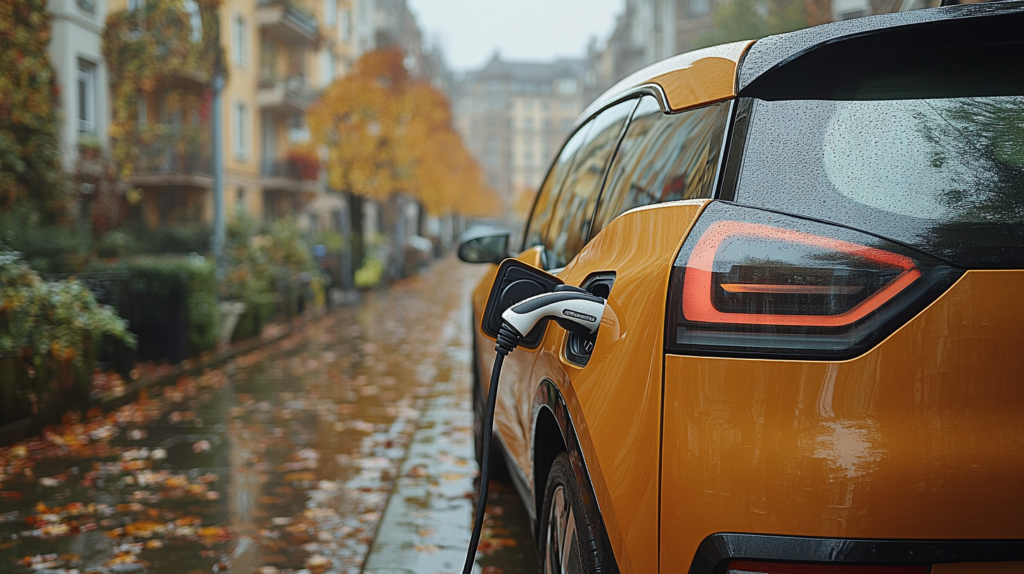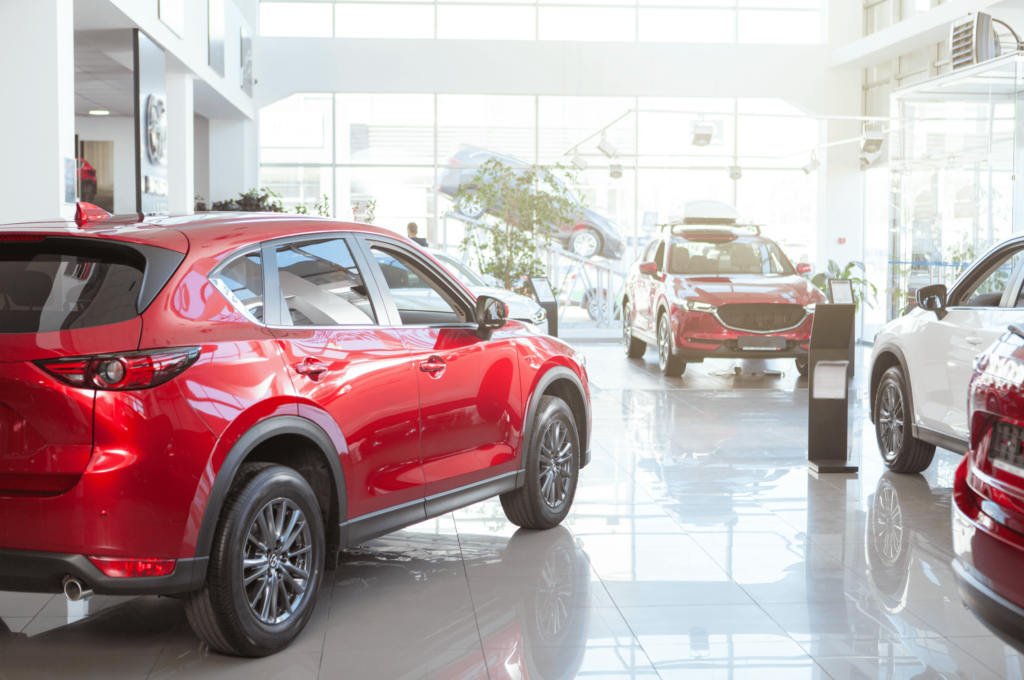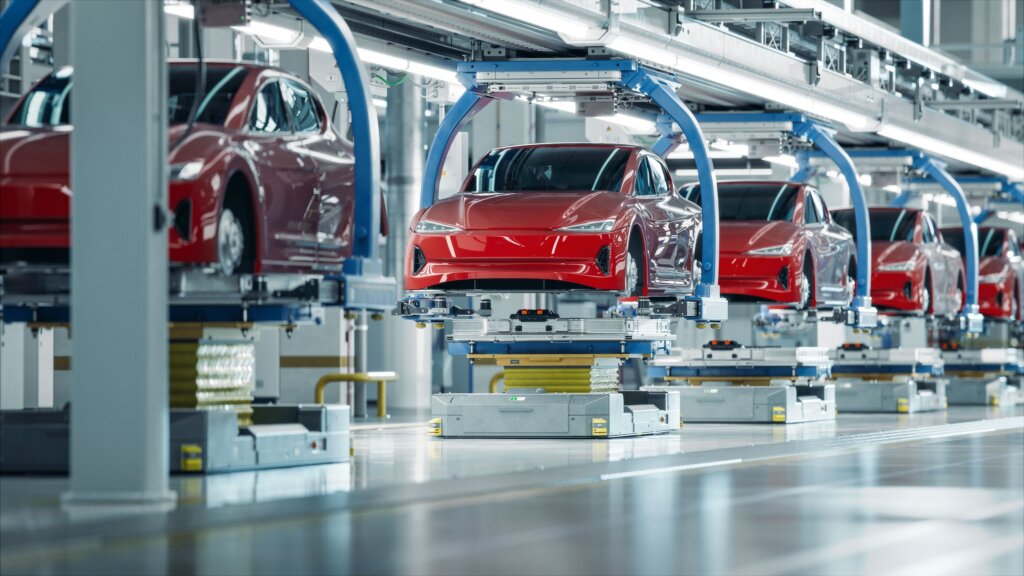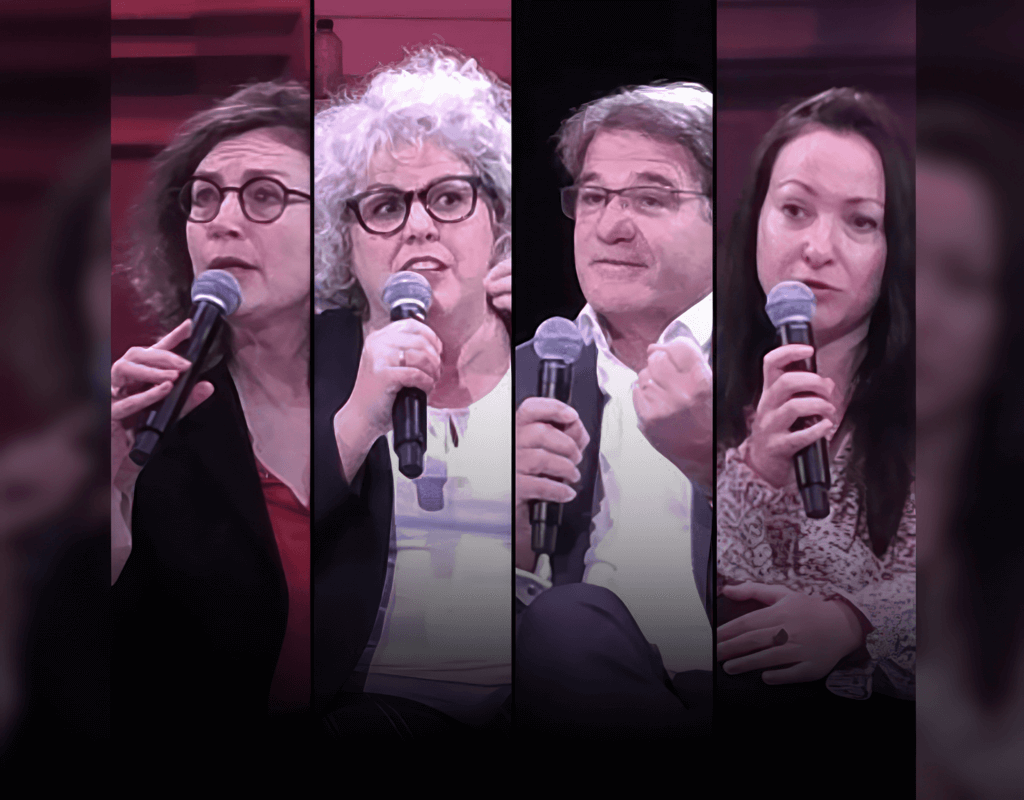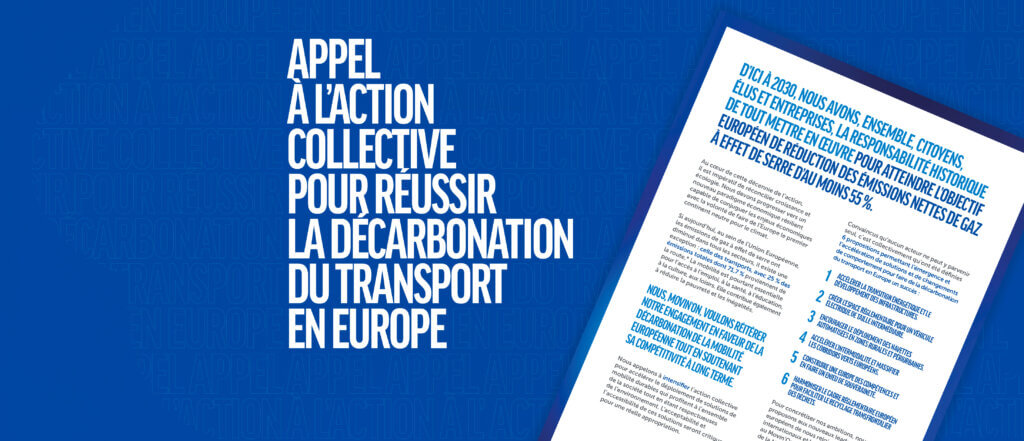‘Everyone Can Ride and Drive Electric’ in Future USA
Transportation is the largest contributor to the United States’ greenhouse gas emissions, with more than 90 percent of the energy powering the sector supplied by petroleum. But now, in 2024, that situation is changing as more American drivers vote for electric vehicles with their wallets. Convenient, easy-access charging stations are the key.
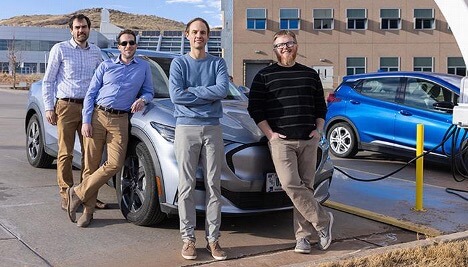
Transportation produces the United States’ largest share of greenhouse gas emissions, with more than 90 percent of the energy powering the sector supplied by petroleum. But now, in 2024, that situation is changing as more American drivers vote for electric vehicles with their wallets. Convenient, easy-access charging stations are the key.
President Joe Biden, a Democrat, has set a goal of creating a national network of 500,000 publicly available chargers by 2030. Accessible charging stations are a crucial part of his effort to inspire drivers to switch to electric vehicles from the petrol-powered cars and trucks that intensify global warming.
But the Biden Administration’s $7.5 billion plan to install charging stations is barely moving. The program was signed into law in late 2021, but by May 2024, only eight federally-funded chargers had been placed.
Defenders of the program say the pace of charger installations will increase later this year.
Funding of $5 billion comes through the National Electric Vehicle Infrastructure (NEVI) program; in addition, $2.5 billion in Charging and Fueling Infrastructure discretionary grant funding is offered through the Infrastructure Investment and Jobs Act, commonly called the Bipartisan Infrastructure Act.
In an effort to speed the program up, President Joe Biden in January vetoed legislation aimed at reversing his administration’s waiver of “Buy America” requirements for government-funded electric vehicle charging stations.
Legislators passed a bill that would block the Federal Highway Administration’s waiver of U.S. content requirements for steel, iron and construction materials used in the manufacture of charging stations. Opponents of the administration’s policy said it would result in U.S. taxpayers subsidizing Chinese-made products.
The President maintained that the Republican bill would eliminate the domestic manufacturing requirement for government-funded electric vehicle chargers and hurt U.S. manufacturing.
“THIS RESOLUTION WOULD HARM MY ADMINISTRATION’S EFFORTS TO ENCOURAGE INVESTMENT IN CRITICAL INDUSTRIES AND BRING HIGH-QUALITY JOBS BACK TO THE UNITED STATES. IT WOULD DELAY THE SIGNIFICANT PROGRESS BEING MADE BY MY ADMIINISTRATION AND THE STATES IN ESTABLISHING THE EV CHARGING NETWORK.” – President Joseph Robinette Biden, Jr.
Some 1.6 million light-duty electric vehicles were sold in the United States in 2023, a big increase from the 600,000 light-duty EVs sold only two years earlier. Those sales figures are expected to climb – when both private and public charging stations are more universally convenient, reliable, and affordable.
“Every community across the nation deserves access to convenient and reliable clean transportation,” said U.S. Secretary of Energy Jennifer Granholm, announcing $623 million worth of charging infrastructure grants in January. “The Biden-Harris Administration is bringing an accessible, made-in-America charging network into thousands of communities while cutting the carbon pollution that is driving the climate crisis.”
Eric Wood, a senior EV charging infrastructure researcher at the U.S. Department of Energy’s National Renewable Energy Laboratory (NREL) in Golden, Colorado, makes the point that charging stations must be widespread and reliable to persuade motorists to make the switch to an EV as their primary mode of transportation.
“This is the fundamental challenge for the industry right now,” Wood said. “Some people like to talk about alternative-fuel vehicles and their infrastructure as a chicken-and-egg problem. But I really think it’s more appropriate to think about infrastructure – specifically, charging stations – needing to lead the market. You need to have these stations be visible and available for people to feel confident in buying an electric vehicle and committing to make it their daily transportation mode of choice.”
This was a key finding from NREL’s report “2030 National Charging Network: Estimating U.S. Light-Duty Demand for Electric Vehicle Charging Infrastructure,” which Wood coauthored.
The report supports the vision of the federal government’s Joint Office of Energy and Transportation by presenting a quantitative needs assessment for a national charging network capable of supporting 30 to 42 million plug-in electric vehicles on the road by 2030.
As established by the Biden-Harris Administration’s Bipartisan Infrastructure Law, the Joint Office is setting the vision for a national charging network that is “convenient, affordable, reliable, and equitable to enable a future where everyone can ride and drive electric.”
The NREL analysis points to the need for a mix of publicly accessible fast-charging stations along highways and near homes and workplaces, and private charging ports at single-family homes and offices that provide slower charging where speed is not that important.
Wood said a trio of factors are attracting consumers to EVs, including an interest in decreasing greenhouse gas emissions. The performance of EVs also plays a part, as do lower operating costs.
“This is especially true if you can do most of your charging at home and take advantage of retail electricity rates,” he said.
EV sales so far have tended to be highest in states that have enacted regulations and incentives encouraging both the supply and demand of zero-emission vehicles (ZEVs) and supporting infrastructure, said Arthur Yip, an NREL transportation researcher. These policy tools stimulate consumer demand and encourage automakers to ship more EVs to those states and do more marketing there.
California, which has the largest concentration of EVs and charging stations, has mandated that by 2035 all new light-duty vehicles sold in the state must be ZEVs. Other states are following California’s lead. But that does not mean that highways and roadways will be jammed only with EVs.
“Keep in mind, it takes about two decades to turn over the existing vehicle stock,” said NREL’s Matteo Muratori, who leads the laboratory’s Transportation Energy Transitions Analysis group.
“The fact that you’re only selling EVs doesn’t mean that on the road you will only see EVs, because we don’t throw away every car every single year. Even with 100% EV sales in 2035, we still expect around 10%–20% of gasoline vehicles on the road in 2050, without accelerated replacement.”
EV adoption varies widely. Nationwide, about 8% of cars sold last year were electric, “but there is a big geographic difference,” Muratori said. “It was over 20% in California, and in some places it is closer to 1%.”
More Reliable Charging, In More Places
Researchers at NREL and other Department of Energy laboratories are collaborating with the Joint Office of Energy and Transportation to improve reliability at charging stations, as motorists who use EVs need confidence in their ability to find a convenient charging station – and have a pleasant experience while doing so.
Everyone in this fast-growing field knows that more charging stations must open in parallel with the growing number of light-duty electric vehicles hitting U.S. roads to keep up with the pace of adoption.
Andrew Meintz is the chief engineer for electric vehicle charging and grid integration at NREL and the overall lead of DOE’s Electric Vehicles at Scale Lab Consortium. Known as EVs@Scale, the effort by NREL and other national laboratories that drives infrastructure research and development.
“We’re focused on improving all aspects of EV charging infrastructure to make the choice of buying an EV easy for drivers,” Meintz said. “Our goal is to make charging seamless, so they can fuel it, just like they can with their gas vehicle, go on a road trip, and not be concerned about how far they can travel between charges. I know a few people – not to mention myself – who have taken long road trips in these vehicles. It’s possible. But the charging stations need to be reliable and available. People should be able to expect every time they go to a charging station, they’re going to get the experience they want.”
Beyond cost, the ease of charging an EV also plays a role in the purchase decision. Wood said he has read consumer surveys that revealed people without an EV say they would want to charge their cars quickly, with plenty of public charging locations available.
“Once people get into an electric vehicle, you find their mindset really changes,” he said. “We see that the preference is really for charging that is low cost and convenient. Charging at home is typically the location that offers the best convenience and cost.”
NREL’s Brennan Borlaug, a transportation research analyst, said the early adopters of EVs have primarily lived in single-family homes with garages where they could install a charger. This situation can make charging an EV even more convenient than refueling a conventional vehicle for typical daily travel.
“But if we truly want EVs to reach the mass market, they must appeal to a broader set of drivers, including those renting their homes or living in apartments without a dedicated home charger,” Borlaug, a coauthor of the 2030 National Charging Network study, said.
“We need to be deploying charging stations to meet the anticipated demands of today’s and tomorrow’s drivers, not yesterday’s,” Borlaug said.
ChargePoint, a California-based provider of networked EV charging, now enables drivers access to charge at more than one million places across public, private and roaming ports in North America and Europe. ChargePoint claims that to date “more than 10 billion electric miles have been enabled by the ChargePoint network … the equivalent of driving around the world more than 400,000 times.”
Rick Wilmer, CEO of ChargePoint, said, “With more EVs on the road, ensuring drivers have access to reliable charging everywhere they need it is imperative. Enabling access to more than one million ports, on a network that has enabled more than 10 billion electric miles to be driven, underscores ChargePoint’s commitment to delivering a world-class driver experience.”
ChargePoint believes that the electrification of transportation, and delivering a world-class driver experience, is good for the planet and good for business. The company estimates that drivers on its network have avoided more than 410 million gallons of gasoline, and more than 2.2 million metric tons of greenhouse gas emissions as a result.
Filling in the Charging Gaps
At NREL, Wood estimates that because they live in apartments or other multifamily properties, a quarter of motorists do not currently have charging readily available.
“There will be some apartment complexes that offer charging on-site, either paid or as a free amenity to their tenants,” he said. “But there are a lot of challenges for property owners to provide that charging, and there’s not always a clear incentive for them to do so.”
That creates a need for EV chargers at workplaces, and not just at office buildings.
“Some of the people most likely to need a charger at work are those who work in retail and industrial settings,” Wood said. “Access to charging at strategic workplaces is a really important piece of the puzzle.”
Three types of charging scenarios exist. The first two are AC chargers, named Level 1 and Level 2, which recharge EV batteries in a matter of hours. Someone with access to a home charger can plug in a vehicle overnight and have a full battery by morning.
Meanwhile, a network of DC fast-charging charging stations will be installed along highways. With millions of EVs already on the road, work remains to fill in the gaps in the charging network. The Bipartisan Infrastructure Law includes billions of dollars earmarked for a backbone of high-speed chargers regularly spaced along major roads and highways.
“THE CHARGING NETWORK IS HIGH CONCENTRATED AND ALSO FRAGMENTED. WE’RE STILL AT A VERY EARLY STAGE IN THE MARKET. PUBLIC CHARGERS WERE INITIALLY DEPLOYED IN AND AROUND AREAS WHERE EVs WERE BEING ADOPTED. THIS IS LOGICAL BUT HAS PRODUCED A NETWORK THAT IS NOT NECESSARLY THE MOST CONNCECTED OR EQUITABLE.” – Brennan Borlaug, Transportation Research Analyst, National Renewable Energy Laboratory
New Tools for New Climate Pressures
Amid mounting concern about climate change, researchers at NREL are developing cutting-edge tools and producing groundbreaking research to study zero-emission vehicles and related infrastructure, including their integration into the energy system.
Two of the laboratory’s world-class resources include the EVI-X Modeling Suite of Electric Vehicle Charging Infrastructure Analysis Tools to help guide deployment of charging infrastructure, and the Transportation Energy & Mobility Pathway Options (TEMPO) model to explore pathways for achieving long-term climate goals.
To address the issue of equity and electric vehicles, NREL researchers developed the Electric Vehicle Infrastructure for Equity (EVI-Equity) model. This model is in response to what NREL calls “an implicit bias” when it comes to where to build charging stations, which have tended to skip low-income and rural areas. The use of EVI-Equity guides more equitable and just EV adoption and infrastructure deployment.
The differences between urban and rural areas cannot be overlooked in determining where to install charging stations, the NREL researchers concluded.
“People living outside of urban areas tend to drive longer distances, and they tend to drive bigger cars that use more energy,” Muratori said. “That makes it a bit more challenging to electrify. On the other hand, the cost savings are more significant and you’re more likely to have a place to charge at home, which balances things out to an extent.”
He said urban drivers have been faster at embracing EVs in part because the initial vehicles available tended to be smaller cars and used for shorter distances. Now that more manufacturers have introduced electric pickup trucks and SUVs, interest in EVs has accelerated in rural areas.
Yip and fellow researchers analyzed millions of data points to determine how much EVs have been driven. Relying on odometers from used cars for sale, they found battery-powered vehicles on average have been driven less than gasoline-fueled vehicles.
Among EVs, the researchers found that Tesla models racked up the most mileage, almost comparable to conventional cars. Tesla vehicles, compared to the other EVs studied, have historically benefited from longer ranges and exclusive charging network access. Today’s EV market now offers similar levels of range performance and charging access.
The time it takes to open a new charging station could be accelerated, too.
“The timeline that it takes to request service from the local electric utility to when you actually get your site energized can vary dramatically across the country right now,” Wood said. “In some cases, it may take over a year between when you request service from a utility and when you actually get power. Speeding up this process is key to helping the industry be nimbler and more efficient.”
The local permitting process could also take a year, Wood explained. “Part of that is the novelty of electric vehicle charging. There are not always local permitting officials that are familiar with the technology, not always familiar with what an electric charging station looks like and what the requirements might be.”
NREL researchers are trying to change that. Ranjit Desai, a transportation researcher at the laboratory, is the primary architect of an online tool designed to accelerate the deployment of charging stations.
The new tool, called Electric Vehicle Infrastructure – Locally Optimized Charging Assessment Tool and Estimator (EVI-LOCATE), originally was developed for federal agencies but will be made available to the public later this year.
“EVI-LOCATE is unique in that it estimates the cost of installing charging stations at any given location,” Desai said. The cost varies depending on several factors such as how far away the location is from a transformer and where the charging station is installed.
Desai has been working since autumn 2023 on a project to determine the “soft costs” of installing a charging station. That is everything beyond the hardware, installation costs, and equipment and includes the costs as well as the time spent waiting for permits and coordinating with utilities. Recommendations will follow on ways to trim the soft costs.
The Joint Office of Energy and Transportation, in partnership with the U.S. Department of Energy’s Clean Energy to Communities (C2C) Program, has launched the second set of modules for the Public Electric Vehicle Charging Playbook. The playbook features interactive resources to assist with the planning and building of infrastructure that supports the transition to zero-emission transportation.
Later this month, the Joint Office will host a webinar showcasing the latest set of modules designed to help communities, planning organizations, local and state governments, Tribal Nations, and other decision makers navigate important considerations when planning and deploying EV charging infrastructure. Panelists will include:
- Jeff Peel, Deployment Manager, Joint Office of Energy and Transportation
- Kaylyn Bopp, Project Manager, National Renewable Energy Laboratory
- Lauren Reichelt, Project Manager, National Renewable Energy Laboratory
- Brian Booher, Senior Planning Specialist for Zero Emissions Vehicles, Montgomery County
- Alana Wilson, JUST Consortium Representative
The webinar is scheduled for August 27, 2024 at noon East Coast Time and 9:00 AM Pacific Time. To register, click here.
The NREL report estimates that a $31–$55-billion cumulative capital investment in publicly accessible charging infrastructure is necessary to support a mid-adoption scenario of 33 million PEVs on the road by 2030.
As of March 2023, NREL estimated that $23.7 billion of capital was announced for publicly accessible light-duty EV charging infrastructure through the end of the decade, including from private firms, federal, state, and local governments, and electric utilities.
Toute l’actualité de Movin’On
dans votre boîte mail
Auteur
Partager
Tweets de @movinonconnect
Movin'On 2035 TODAY EP02 - Circular Economy & Competitivity
Movin’On 2035 TODAY EP01 – Fair Mobility for All https://x.com/i/broadcasts/1yNxagBrWZbGj
✨ THAT'S A WRAP!
Movin'On Summit 2024 has just concluded in Brussels!
More than 350 leaders and experts in sustainable mobility gathered to exchange ideas, collaborate, and share their vision for desirable and decarbonised mobility in Europe. Together, we explored ways to build…
🔴 Live from #MovinOnSummit2024
@AshaSumputh has just invited Denis Machuel, CEO at @AdeccoGroup and Florent Menegaux, President of the @Michelin Group & President of Movin'On
L’actualité de la mobilité durable
Découvrez les dernières tendances, des analyses thématiques et nos prochains rendez-vous

